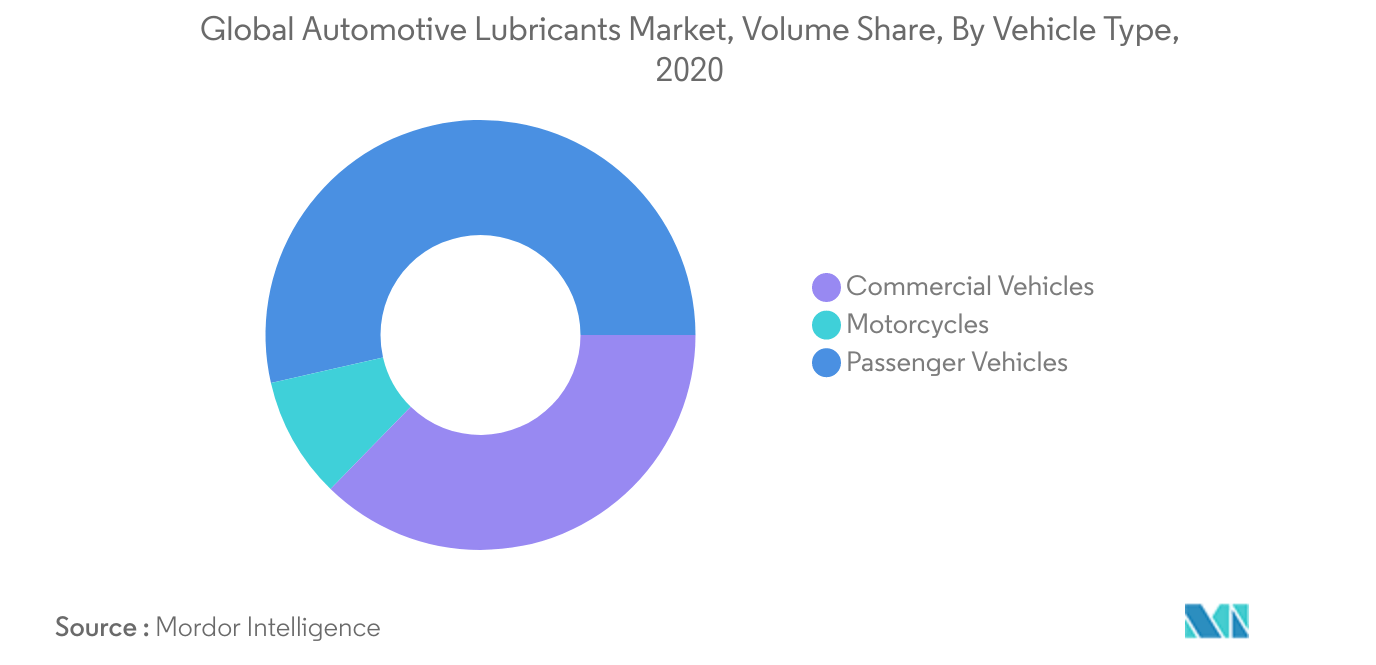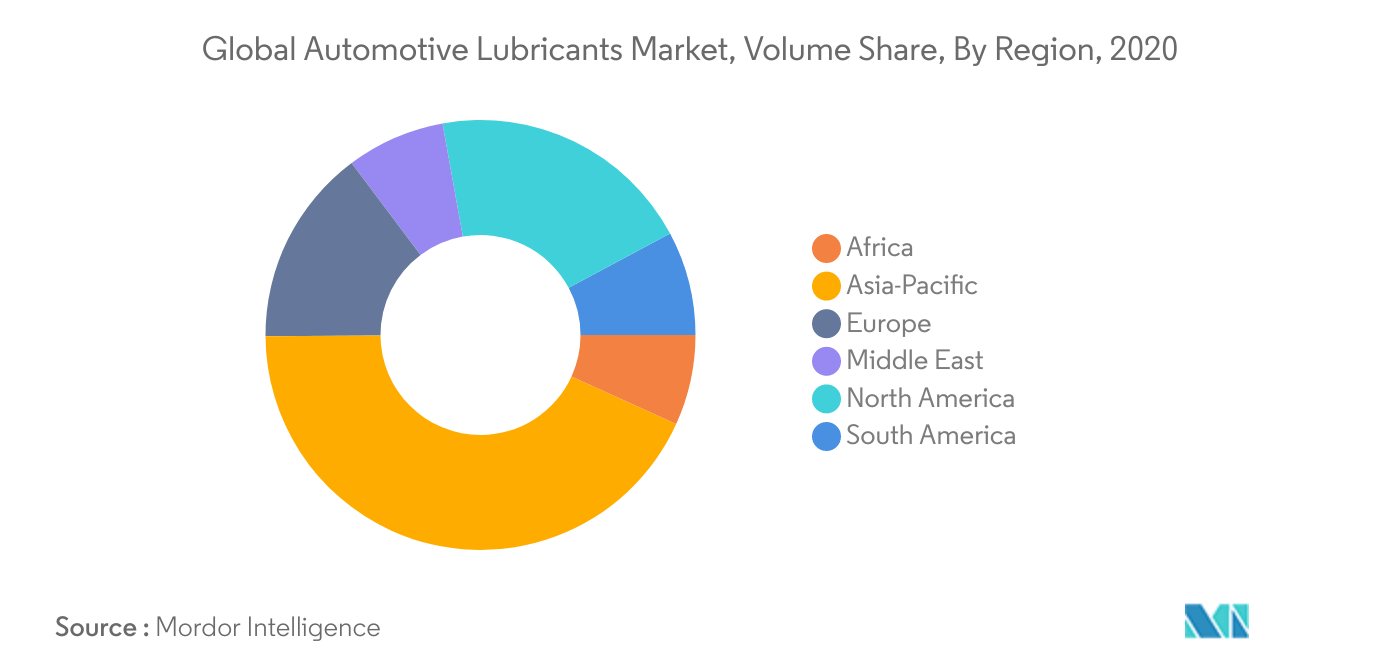Market Trends of Global Automotive Lubricants Industry
This section covers the major market trends shaping the Automotive Lubricants Market according to our research experts:
Largest Segment By Vehicle Type : <span style="font-family: 'regular_bold';color:#0e7db3;">Passenger Vehicles</span>
- In the global automotive industry, the passenger vehicles (PV) segment accounted for almost 55.1% share in the total number of on-road vehicles during 2020, followed by motorcycles and passenger vehicles with 34.7% and 10.1% shares, respectively.
- The passenger vehicles segment accounted for the highest share of 53.6% in the total automotive lubricant volume consumption in 2020, followed by the commercial vehicles segment that accounted for a share of 37.3%. During the same year, travel restrictions to curb COVID-19 significantly affected the usage of these vehicles and their lubricant consumption.
- During 2021-2026, lubricant consumption by the motorcycles segment is expected to witness the highest CAGR growth, amounting to 5.06%. The growing motorcycle sales combined with the easing down of COVID-19 pandemic-related travel restrictions are likely to be the key factors driving this trend.

Largest Region : <span style="font-family: 'regular_bold';color:#0e7db3;">Asia-Pacific</span>
- Consumption of automotive lubricants is dominated by Asia-Pacific, North America, and Europe. In 2020, Asia-Pacific accounted for about 43% of the total automotive lubricant consumption globally, while North America and Europe accounted for a share of around 20% and 14.8%, respectively.
- The COVID-19 outbreak in 2020 significantly affected automotive lubricant consumption in many countries worldwide. North America was the most affected, with a 17.4% drop, during 2019-2020. Africa was the least affected, with a 4.7% drop in its automotive lubricant consumption.
- During 2021-2026, Asia-Pacific is likely to be the fastest-growing lubricant market, as the consumption is likely to increase at a CAGR of 4.89%, followed by Africa and the Middle East, which are expected to record a CAGR of 4.13% and 3.22%, respectively.


